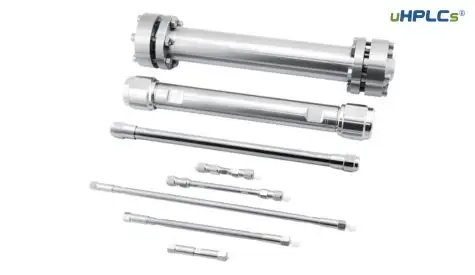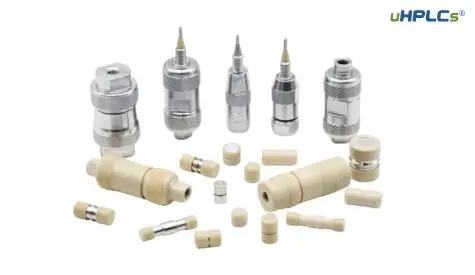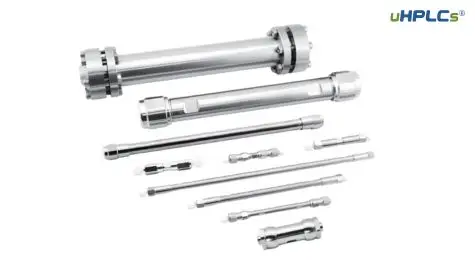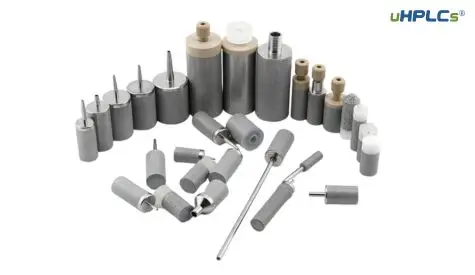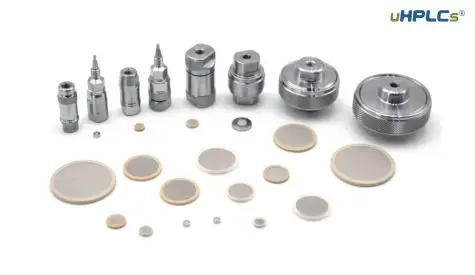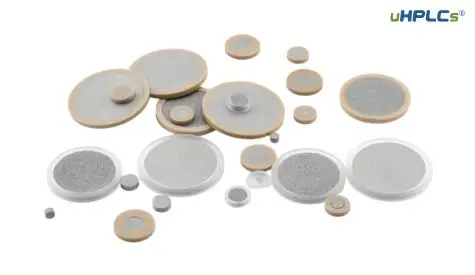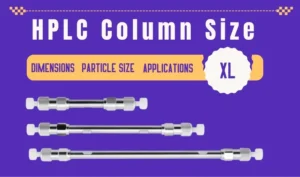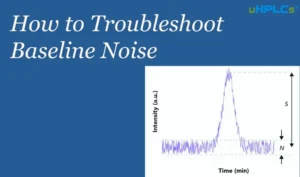High-Performance Liquid Chromatography (HPLC) is a pivotal tool in analytical chemistry, offering:
- Precision and Accuracy: Essential for quantifying and identifying compound mixtures in various industries.
- Versatility: Used in pharmaceuticals, environmental monitoring, and food safety.
HPLC is primarily categorized into two methods:
- Reverse Phase (RP) HPLC: Utilizes non-polar stationary phases and polar mobile phases, ideal for a broad range of substances including drugs and peptides.
- Normal Phase (NP) HPLC: Features polar stationary phases and non-polar mobile phases, best for separating polar compounds like lipids and sterols.
Here we will explore the core differences and applications of RP and NP HPLC, guiding you through their optimal uses in different analytical scenarios.
1. Basic Principles
HPLC: A Brief Overview
High-Performance Liquid Chromatography (HPLC) is a powerful analytical technique used to separate components in a mixture based on their interactions with a stationary phase and a mobile phase. There are two main types of HPLC: Reverse Phase (RP-HPLC) and Normal Phase (NP-HPLC).
Reverse Phase HPLC (RP-HPLC)
- Description: In RP-HPLC, the stationary phase is nonpolar (e.g., C18, C8), and the mobile phase is polar (e.g., water, acetonitrile). Components that are more polar interact more strongly with the mobile phase and elute first, while less polar components interact more strongly with the stationary phase and elute later.
- Solvents: Common solvents used in RP-HPLC include:
- Water
- Acetonitrile
- Methanol
- Tetrahydrofuran (THF)
- Stationary Phases: The most common stationary phases are:
- C18 (octadecyl)
- C8 (octyl)
- C4 (butyl)
Normal Phase HPLC (NP-HPLC)
- Description: In NP-HPLC, the stationary phase is polar (e.g., silica, alumina), and the mobile phase is nonpolar (e.g., hexane, heptane). Components that are more polar interact more strongly with the stationary phase and elute later, while less polar components interact more strongly with the mobile phase and elute first.
- Solvents: Common solvents used in NP-HPLC are:
- Hexane
- Heptane
- Dichloromethane
- Chloroform
- Ethyl acetate
- Stationary Phases: The most common stationary phases are:
- Silica gel
- Alumina
2. Mechanisms of Separation
Reverse Phase HPLC (RP-HPLC)
- Retention of non-polar compounds: In RP-HPLC, non-polar compounds are retained due to hydrophobic interactions between the non-polar analyte and the non-polar stationary phase. The hydrophobic effect is a thermodynamic phenomenon that drives non-polar molecules to associate with each other rather than with polar molecules like water.
- Role of hydrophobic interactions: These interactions are primarily driven by the minimization of the system’s free energy. The hydrophobic molecules minimize their contact with the polar solvent by clustering together, forming a hydrophobic environment within the stationary phase. Non-polar analytes are more likely to partition into this hydrophobic environment, resulting in their retention.
Normal Phase HPLC (NP-HPLC)
- Retention of polar compounds: In NP-HPLC, polar compounds are retained due to polar interactions between the polar analyte and the polar stationary phase. These interactions can include hydrogen bonding, dipole-dipole interactions, and ion-dipole interactions.
- Role of polar interactions and solvent strength: The strength of these polar interactions depends on the polarity of both the analyte and the stationary phase. A more polar analyte will have stronger interactions with the polar stationary phase and will be retained longer. The solvent strength also plays a role; a more polar solvent can compete with the analyte for interactions with the stationary phase, reducing retention.
3. Applications and Suitability
Reverse Phase HPLC (RP-HPLC)
1. Suitable applications:
- Pharmaceuticals: Analysis of drugs, active pharmaceutical ingredients (APIs), and related compounds.
- Environmental samples: Detection of pollutants, pesticides, and other organic contaminants in water, soil, and air.
- Food analysis: Determination of additives, preservatives, and contaminants in food products.
- Biochemistry: Separation of proteins, peptides, and nucleic acids.
2. Advantages:
- Handling complex mixtures: RP-HPLC is particularly well-suited for handling complex mixtures due to its ability to separate compounds based on their polarity and hydrophobic interactions. This allows for the simultaneous analysis of multiple components in a sample.
- Wide range of applicability: RP-HPLC can be used to analyze a wide variety of compounds, making it a versatile technique in many fields.
Normal Phase HPLC (NP-HPLC)
1. Ideal scenarios:
- Separation of lipids: NP-HPLC is often used for the separation of lipids based on their polarity and chain length.
- Analysis of vitamins: NP-HPLC can be employed to separate and quantify various vitamins, including fat-soluble vitamins and water-soluble vitamins.
- Separation of polar compounds: NP-HPLC is well-suited for the analysis of polar compounds that are not easily separated using RP-HPLC.
2. Benefits:
- Orthogonal separation: NP-HPLC provides an orthogonal separation mechanism to RP-HPLC, allowing for the analysis of compounds that are difficult to separate using RP-HPLC alone.
- Specific analytical contexts: NP-HPLC can be particularly useful in specific analytical contexts, such as the analysis of chiral compounds or the separation of isomers.
4. Sample Preparation and Mobile Phases
Reverse Phase HPLC (RP-HPLC)
Typical preparation techniques:
- Liquid samples: Direct injection or dilution with a suitable solvent.
- Solid samples: Extraction with a suitable solvent, followed by filtration or centrifugation to remove particulates.
- Biological samples: Protein precipitation or solid-phase extraction (SPE) to remove interfering components.
Common mobile phase compositions:
- Water-acetonitrile: A popular choice for a wide range of analytes.
- Water-methanol: Another common combination, often used for more polar compounds.
- Buffer-organic solvent: Buffers can be added to control pH and ionic strength, especially for biomolecules.
Normal Phase HPLC (NP-HPLC)
Differences in sample prep due to polarity:
- Solid samples: Extraction with a nonpolar solvent is often required to ensure compatibility with the nonpolar mobile phase.
- Polar compounds: Derivatization may be necessary to increase the hydrophobicity of polar analytes and improve their retention on the stationary phase.
Typical mobile phase solvents used:
- Hexane: A common starting solvent for NP-HPLC.
- Heptane: Another popular choice, especially for more nonpolar analytes.
- Ethyl acetate: Can be added to increase the polarity of the mobile phase.
- Dichloromethane: A stronger solvent that can be used for more polar analytes.
Note: The choice of mobile phase composition and sample preparation technique will depend on the specific analytes being analyzed and the desired separation selectivity.
5. Advantages and Limitations
Reverse Phase HPLC (RP-HPLC)
1. Advantages:
- Broad applicability: RP-HPLC is a versatile technique that can be used to analyze a wide range of compounds, from small molecules to biomolecules.
- Robustness: RP-HPLC is generally a robust technique, with relatively stable baseline and reproducible results.
2. Limitations:
- Separating highly polar compounds: RP-HPLC can be challenging for separating highly polar compounds, as they may have limited retention on the nonpolar stationary phase.
Normal Phase HPLC (NP-HPLC)
1. Advantages:
- High efficiency for certain types of samples: NP-HPLC can be highly efficient for separating certain types of samples, such as lipids and polar compounds.
- Orthogonal separation: NP-HPLC provides an orthogonal separation mechanism to RP-HPLC, allowing for the analysis of compounds that are difficult to separate using RP-HPLC alone.
2. Challenges:
- Moisture-sensitive samples: NP-HPLC can be challenging for analyzing moisture-sensitive samples, as moisture can compete with the analytes for interactions with the polar stationary phase.
- Solvent strength: The solvent strength in NP-HPLC can be more sensitive to changes than in RP-HPLC, which can make it more difficult to optimize the separation conditions.
6. Choosing Between RP and NP HPLC
When deciding between reverse-phase (RP) and normal-phase (NP) HPLC, the nature of your analytes—particularly their polarity—is a key factor.
Polarity of analytes:
- For polar analytes, NP-HPLC is more suitable due to its polar stationary phase, which interacts more strongly with polar compounds.
- For nonpolar analytes, RP-HPLC is preferred thanks to its nonpolar stationary phase, allowing better retention and separation of nonpolar compounds.
Solubility of analytes:
RP-HPLC is generally more compatible with aqueous-organic solvent mixtures, making it suitable for a wide variety of analytes.
NP-HPLC often requires nonpolar solvents (like hexane), and solubility of polar analytes in these solvents must be carefully considered.
Sensitivity:
RP-HPLC tends to offer better sensitivity for many nonpolar or moderately polar analytes.
NP-HPLC can be more sensitive for specific highly polar compounds, especially when paired with suitable detectors.
Cost and column availability:
RP-HPLC columns are widely available and typically less expensive due to their broad industrial usage.
NP-HPLC columns may cost more and have fewer commercially available options, depending on the specific stationary phase used.
Summary: Choosing between RP-HPLC and NP-HPLC depends on the polarity, solubility, and sensitivity requirements of your analytes. RP-HPLC is more commonly used and versatile, especially for nonpolar to moderately polar compounds. In contrast, NP-HPLC is ideal for polar compounds and specific separations requiring different selectivity profiles.
| Comparison Factor | RP-HPLC (Reverse Phase) | NP-HPLC (Normal Phase) |
|---|---|---|
| Stationary Phase Polarity | Nonpolar | Polar |
| Best for Analyte Type | Nonpolar or moderately polar analytes | Polar analytes |
| Analyte Polarity Compatibility | Better for nonpolar compounds (less interaction with nonpolar stationary phase = better separation) | Better for polar compounds (stronger interaction with polar stationary phase) |
| Solvent Compatibility | Aqueous-organic mixtures (e.g., water + methanol/acetonitrile) | Nonpolar solvents (e.g., hexane, chloroform) |
| Solubility of Analytes | Broader range of analytes due to solvent flexibility | Requires careful solvent selection for solubility of polar compounds |
| Sensitivity | Often more sensitive for nonpolar to moderately polar compounds | May offer higher sensitivity for specific highly polar compounds |
| Column Availability | Widely available, lower cost | Fewer options, may be more expensive |
| Typical Use Cases | Pharmaceuticals, environmental analysis, food testing | Lipid analysis, sugar/alcohol separations, polar compound screening |
| Popularity / Versatility | Highly popular and versatile, default method in many labs | More specialized, used when RP does not offer sufficient selectivity |
7. Conclusion
We’ve detailed the differences between Reverse Phase (RP) HPLC, ideal for non-polar compounds, and Normal Phase (NP) HPLC, best for polar substances. Selecting the right method is crucial for achieving precise analytical results.
For expert advice on choosing the right HPLC method or any other inquiries, contact us at sales@uhplcs.com.



